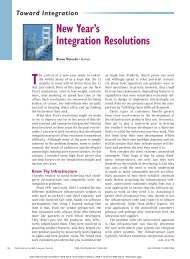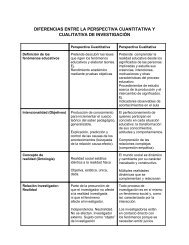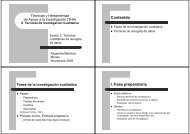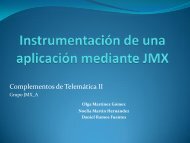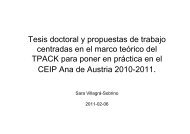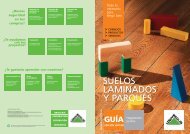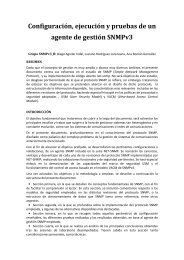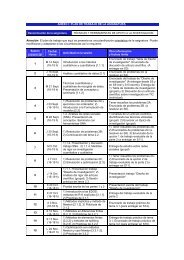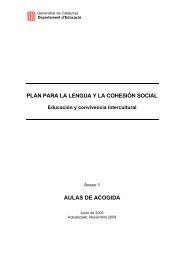Research Questions and Hypotheses
Research Questions and Hypotheses
Research Questions and Hypotheses
Create successful ePaper yourself
Turn your PDF publications into a flip-book with our unique Google optimized e-Paper software.
146 Designing <strong>Research</strong> Quantitative Methods 147<br />
outcome, controlling for all other factors that might influence that outcome.<br />
As one form of control, researchers r<strong>and</strong>omly assign individuals to<br />
groups. When one group receives a treatment <strong>and</strong> the other group does not,<br />
the experimenter can isolate whether it is the treatment <strong>and</strong> not other factors<br />
that influence the outcome.<br />
COMPONENTS OF A SURVEY METHOD PLAN<br />
The design of a survey method section follows a st<strong>and</strong>ard format.<br />
Numerous examples of this format appear in scholarly journals, <strong>and</strong><br />
these examples provide useful models. The following sections detail typical<br />
components. In preparing to design these components into a proposal,<br />
consider the questions on the checklist shown in Table 8.1 as a general<br />
guide.<br />
The Survey Design<br />
In a proposal or plan, one of the first parts of the method section can<br />
introduce readers to the basic purpose <strong>and</strong> rationale for survey research.<br />
Begin the discussion by reviewing the purpose of a survey <strong>and</strong> the rationale<br />
for its selection for the proposed study. This discussion can<br />
Identify the purpose of survey research. This purpose is to generalize<br />
from a sample to a population so that inferences can be made about some<br />
characteristic, attítude, or behavior of this population (Babbie, 1990).<br />
Provide a reference to this purpose from one of the survey method texts<br />
(several are identified in this chapter).<br />
Indicate why a survey is the preferred type of data collection procedure<br />
for the study. In this rationale, consider the advantages of survey<br />
designs, such as the economy of the design- <strong>and</strong> the rapid turnaround in<br />
data collection. Discuss the advantage of identifying attributes of a large<br />
population from a small group of individuals (Babbie, 1990; Fowler,<br />
2002).<br />
Indicate whether the survey will be cross-sectional, with the data<br />
collected at one point in time, or whether it will be longitudinal, with data<br />
collected over time.<br />
Specify the form of data collection. Fink (2002) identifies four types:<br />
self-administered questionnaires; interviews; structured record reviews<br />
to collect financial, medical, or school information; <strong>and</strong> structured observations.<br />
The data collection may also involve creating a Web-based or<br />
Internet survey <strong>and</strong> administering it online (Nesbary, 2000; Sue & Ritter,<br />
2007). Regardless of the form of data collection, provide a rationale for the<br />
Table 8.1 A Checklist of <strong>Questions</strong> for Designing a Survey Method<br />
Is the purpose of a survey design stated?<br />
Are the reasons for choosing the design mentioned?<br />
Is the nature of the survey (cross-sectional vs. longitudinal)<br />
identified?<br />
Are the population <strong>and</strong> its size mentioned?<br />
Will the population be stratified? If so, how?<br />
How many people will be in the sample? On what basis was this<br />
size chosen?<br />
What will be the procedure for sampling these individuals<br />
(e.g., r<strong>and</strong>om, nonr<strong>and</strong>om)?<br />
What instrument will be used in the survey? Who developed the<br />
instrument?<br />
What are the content oreas addressed in the survey? The scales?<br />
What procedure will be used to pilot or field test the survey?<br />
What is the timeline for administering the survey?<br />
What are the variables'in the study?<br />
How do these variables cross-reference with the research questions<br />
<strong>and</strong> items on the survey') .<br />
What specific steps will be taken in data analysis to<br />
analyze returns?<br />
check for response bias?<br />
conduct a descriptive analysis?<br />
collapse items into scales?<br />
check for relkability of scales?<br />
run Inferential statistics to answer the research questions?<br />
How will the results be interpreted?<br />
procedure, using arguments based on its strengths <strong>and</strong> weaknesses, costs,<br />
data availability, <strong>and</strong> convenience.<br />
The Population <strong>and</strong> Sample<br />
Specify the characteristics of the population <strong>and</strong> the sampling procedure.<br />
Methodologists have written excellent discussions about the underlying



